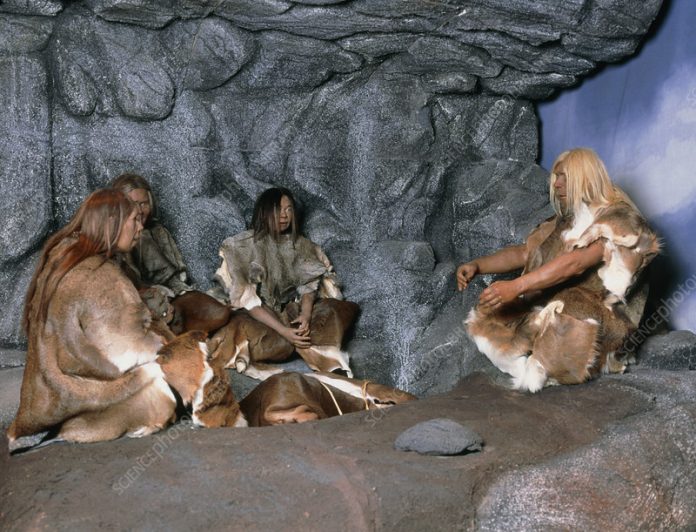A new study of Neanderthal bones found at the Marillac site in the he French region of Poitou-Charentes shows that Neanderthals in this part of France routinely cut the bodies of newly dead members of their family with stone tools. María Dolores Garralda, professor at the Complutense University of Madrid and a researcher at the University of Bordeaux in France, and colleagues examined bones from the site in a new study that was presented in the edition of the American Journal of Physical Anthropology. The cuts could have been a ritual or may have been cannibalism.
The researchers examined bone fragments from three Neanderthals that date to 57,600 years ago. A partial small arm bone (radius), the smaller lower leg bone (fibula) and the upper leg bone (femur) of different individuals were examined. The femur belonged to a child.
All of the bones showed evidence of having had the flesh removed or partially removed by stone tools. The tool marks are compatible with the tool technology that Neanderthals are known to have developed. There are no signs on any of the bones that animals ate the flesh of the dead or scarred the bones. The removal of the flesh occurred shortly after death in all cases.
The potential for cannibalism in this group of Neanderthals is a small possibility according to the researches. The discovery of literally mountains of animal bones in the same area as the Neanderthal dead argues against cannibalism. The potential for cannibalism could have existed in times of severe lack of food but no certain and clear evidence of Neanderthal bite marks on the bones can be found.
The researchers propose that some form of burial or death ritual was the cause of the cutting of the dead. The cause may have been to keep the flesh of the dead away from the bones so that scavengers would not exhume the buried dead. There may have been a religious meaning to the removal of the flesh of the dead to the Neanderthal mind.















